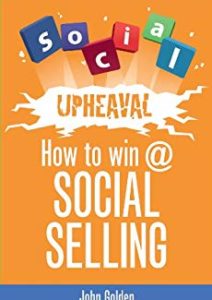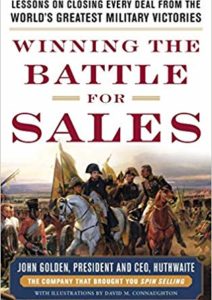Just ask any old timer: In days gone by, things were a lot more stable. A salesperson, for example, knew who to call on at XYZ company to make a pitch. And he could return to that company, and that person, to follow the sale through to a close.
Today’s sales universe is a far cry from that. First of all, B2B sales is rarely if ever focused on a single buyer anymore. There are several purchase approval points—decision makers—and a salesperson must know who all of them are. Today’s sales involve targets that are moving–and many more of them.
Details
But there’s more. Our old time salesperson also knew something about that buyer. What kind of sports that buyer enjoyed. That buyer’s favorite haunt for lunch, or (better) after work drinks. Often the salesperson even knew the person’s birthday.
Today is no different—a salesperson must know something about each of the decision makers in a purchase. The more that’s known about each of these people, the better. But now the salesperson needs to know what matters most to each individual about the purchase and what their specific decision criteria are – their sports teams, not so much! And at the drop of a hat the salesperson has to be ready to follow up with any of them with the right information addressing their specific concern.
Multipliers and Moving Around
But wait…there’s even more. If a salesperson in a B2B business is really going to survive, there has obviously got to be more than one potential sale in the rep’s pipeline. Depending on the price of the product or service, it could be anywhere from 5 to 50 different sales pending, or even more. For each sale, there are multiple decision makers. And yes—the salesperson must be able to keep up with each and every one of them, at any and all times.
But wait—yes, there’s still more! Given all these people, in all these prospect companies, you know that not all of those people are going to remain on those jobs indefinitely. Some are very likely to leave the company, or shift positions, or get promoted. Our intrepid salesperson must keep up with that as well.
What Does It Take?
As we discussed in our last blog in this series, there is a huge difference between someone who would keep track of all such details in copious scribbled notes stuffed in pockets, briefcases and taped all over a desk and computer monitor, and frantically making calls to keep up with it all–and a rep who smoothly proceeds from one task to the next, one sales call to the next, while the whole time staying up with or even ahead of the game. Their secret is focus and clarity.
Such a salesperson, first of all, knows where each opportunity stands in the sales process. They’re able to tell which are closer to closing, which are more likely to close, and which are worth more in revenue.
Then, drilling down, the rep is able to instantly tell what task must be done next for that opportunity. Also instantly available is the knowledge of which decision-maker the salesperson should contact next, and data about that decision-maker so that the rep isn’t going in blind.
Given that there are quite a number of pending sales with pending tasks—the salesperson is also going to need an overall “plan of attack” on a daily basis. The rep needs to be able to jump right out of the gate with opportunities and tasks neatly prioritized.
The Trick
So how does a sales rep do it? Because there are many who do. The answer has 2 parts:
- They’re basically organized, and have a good sense of what needs to go where. They actually operate their lives that way.
- Most importantly they have utilized the right technology so that they can stay focused on all of these moving targets—and never lose track of any of them.
Stay tuned for more in our series on Focus and Clarity.












